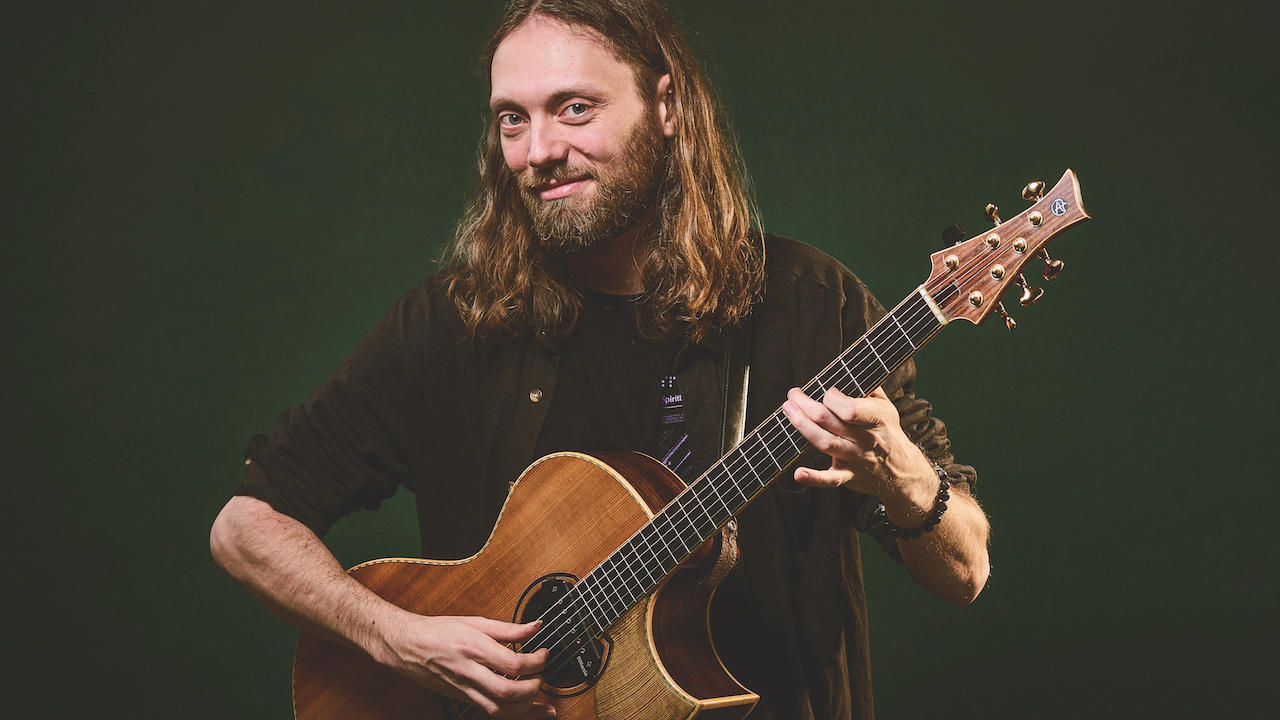
Playing acoustic guitar has come a long way since singer-songwriters perched themselves in front of a microphone on stage, hoping their manual dexterity and fingerpicking finesse would reach the audience via the sound engineer and an often inadequate PA system. These days, the world’s concert halls are no place for the technophobe, either, as the instrument and its peripheral gear have become far more sophisticated.
But very few players have embraced this brave new dawn more readily than Mike Dawes. Not only is he an undoubted acoustic guitar virtuoso, he also tours with a thoroughly space-age setup that stuns audiences worldwide.
After spending years on the road touring with players like Justin Hayward, Tommy Emmanuel and prog-metallers Periphery, his live show is one of the wonders of the modern age.
In between finishing a UK tour and on the eve of flying back out to Las Vegas to record a video for his forthcoming album, Galactic Acid, Mike stopped by the Guitarist studios to offer us a window on his performing world.
How did the tour go?
“The tour with Justin was fantastic. I think most of the shows ended up being sold out, which is a testament to the Moody Blues’ music, how popular Justin is and how many fans he has over here. And it was interesting to see a lot of guitar players at the shows as well.
“It’s always fun playing in the UK because I don’t play here a lot – and that’s not through any particular reason other than the Americans keep dragging me over there, which is obviously lovely. But it’s been so nice to reconnect with the UK and see a lot of friends and family on the road as well. And hopefully it’s the start of me touring here a lot more, you know?”
Are you still opening the show, playing your own solo material, as well as performing in the band?
“Yeah, I’ve been previewing some tunes from my next album. Then I’d run backstage, change the guitar tuning and come out and play all the Moody Blues hits. This particular setlist was my favourite that Justin has done. We spent about six days rehearsing before the tour and we integrated a Moody Blues deep-cut medley into the show, playing some really, really cool songs. So it was a very fresh, exciting set.”
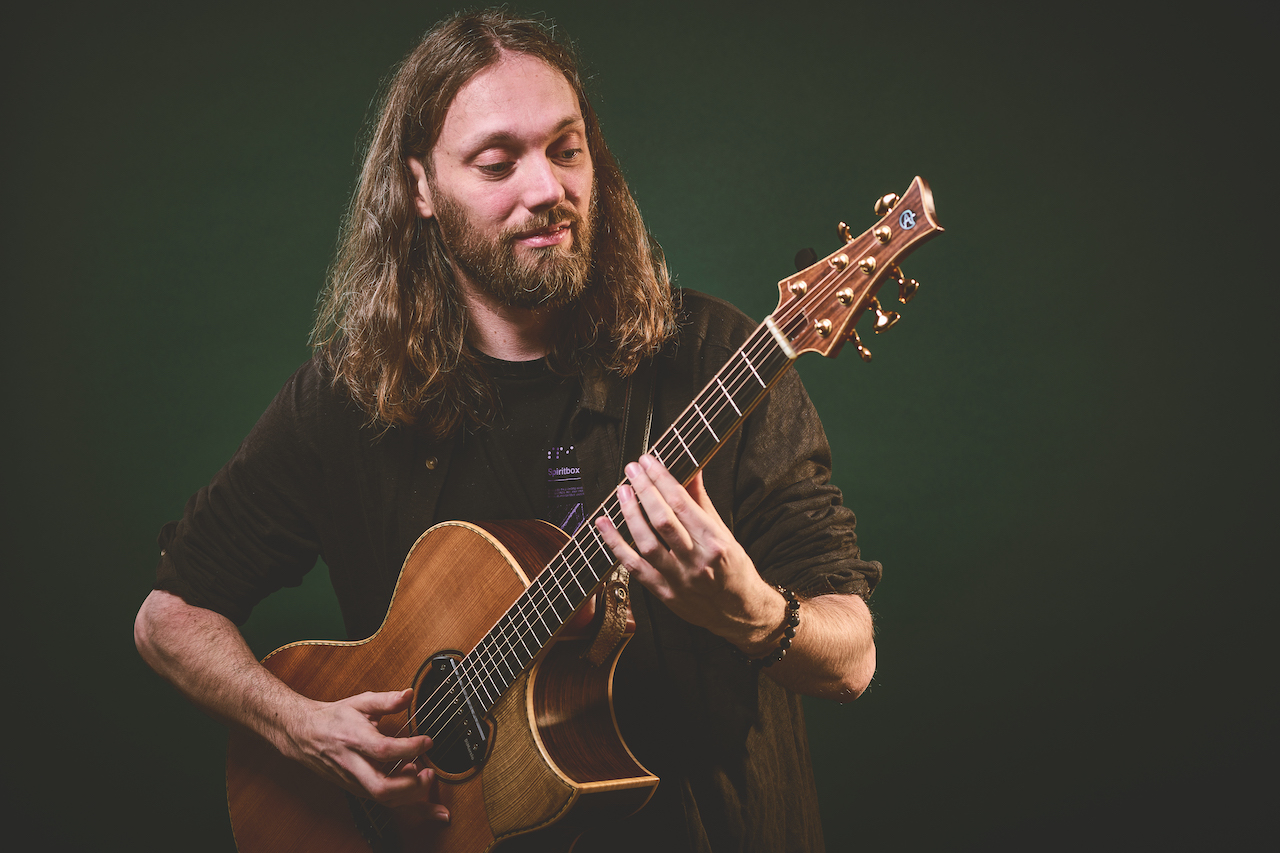
Regarding your own material, you have a new album in the pipeline.
“Currently, I’m collaborating with the band Periphery on two acoustic songs for a double-single that will be released on seven‑inch vinyl. That will be the next video and first official single from the new album. But the new solo album, Galactic Acid, is my first since 2017, which was Era.
“I’m honestly so happy with it; I’m going to be releasing it on special-edition splatter vinyl. It’s 11 songs, some of which people know – things like my Jump arrangement, my Everlong arrangement, that have been out there recently. I’m so proud of it. Not just the original compositions, which will be drip fed throughout the summer, but the arrangements and production. It’s the solo acoustic record that’s a culmination of 10 years of experience, touring, writing and working with other artists.”
Let’s talk about playing live. To begin with, you’re known for having a pedalboard about the size of Heathrow…
“Well, Terminal 5 maybe… [laughs]. It’s not that big! It’s just bigger than a lot of acoustic players’ and it definitely looks like crap, but I like that it looks homemade because it is. I made it with my dad with a bit of plywood and some Velcro. I flirted with a more professional-looking ’board on the Periphery tour, but went back to my dad’s cracked, Velcro-covered piece of plywood. It just sounds great.
“In this very aesthetic world that we live in, where everything is very outwardly presented, and everything’s very ‘social media’ and very clean and very curated, I like the idea that a functioning sort of ‘Tonehenge’, if you will, is made on a piece of plywood covered in Velcro. It kind of goes in line with the whole solo acoustic guitar thing. It’s electronics, but there’s something grassroots about it, you know? Little bits of fluff that get picked up from Basingstoke will remain for years to come.”
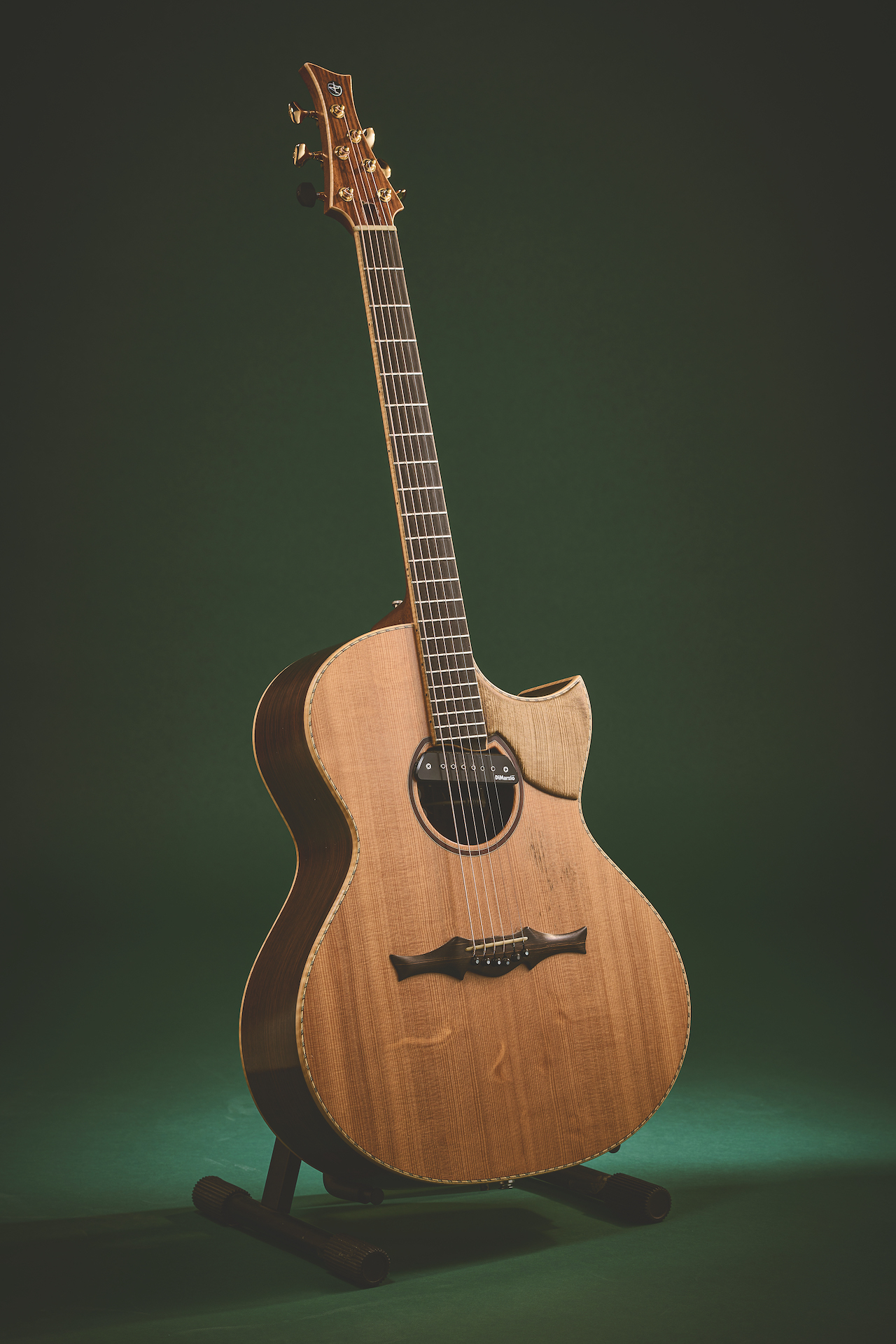
We’ll go into more detail regarding the effects in a moment, but the first link in the chain has to be your signature Cuntz guitar.
“I’ve been playing my Andreas Cuntz signature guitar since I got it in 2016. I do have another Cuntz, a koa model, which has a few little quirks. It has banjo tuners on it and I’ve used it for a few tunes that I did with Tommy [Emmanuel] and a few tunes on the new album.
“But my main guitar is the Indian Rose signature and that guitar has four pickups in it. I want to tell people that they do not need four pickups in their guitar! This guitar needs four pickups; everyone else should have three.
“There’s a reason this needs the fourth pickup: the pickups are categorised into different kinds of sonic purposes. The traditional under-the-bridge plate piezo is the main acoustic guitar sound live. The magnetic soundhole pickup, which I designed with DiMarzio and called The Black Angel, is to just pick up the strings.
“What that allows me to do is use electric guitar effects and things that would maybe be hindered by the sound of a wooden box or any external vibrations. So I run just the electric guitar effects through that pickup – things like an octave pedal, an amp simulator, a Whammy pedal and the tuner.
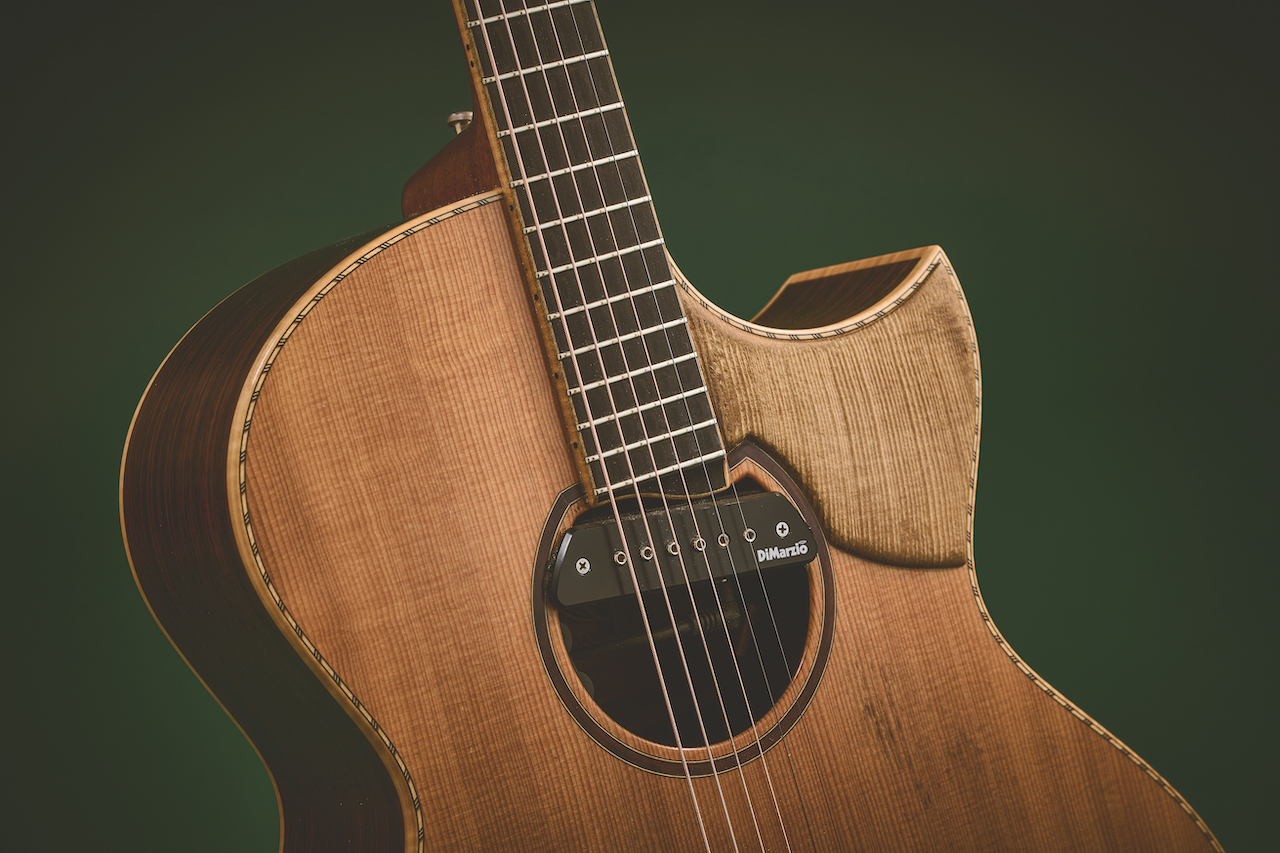
“The third pickup is a microphone from a K&K Trinity system, just the microphone because I’ve wired in a different piezo made by a company called Schatten – their HFN pickup – because I liked it better than the K&K Trinity. There’s a thumb‑wheel in the soundhole that controls the volume of the microphone because some songs require more microphone and some songs require less.
“The fourth pickup is exclusive to the signature Cuntz guitar and that is another Schatten pickup called the Dualie [Insider] and it’s just a little contact pickup, similar to a Shadow transducer or something like that. It’s just in the area where I do the ‘bass drum’ sound. So we’ve got the acoustic guitar, electric guitar, percussion and kick drum.”
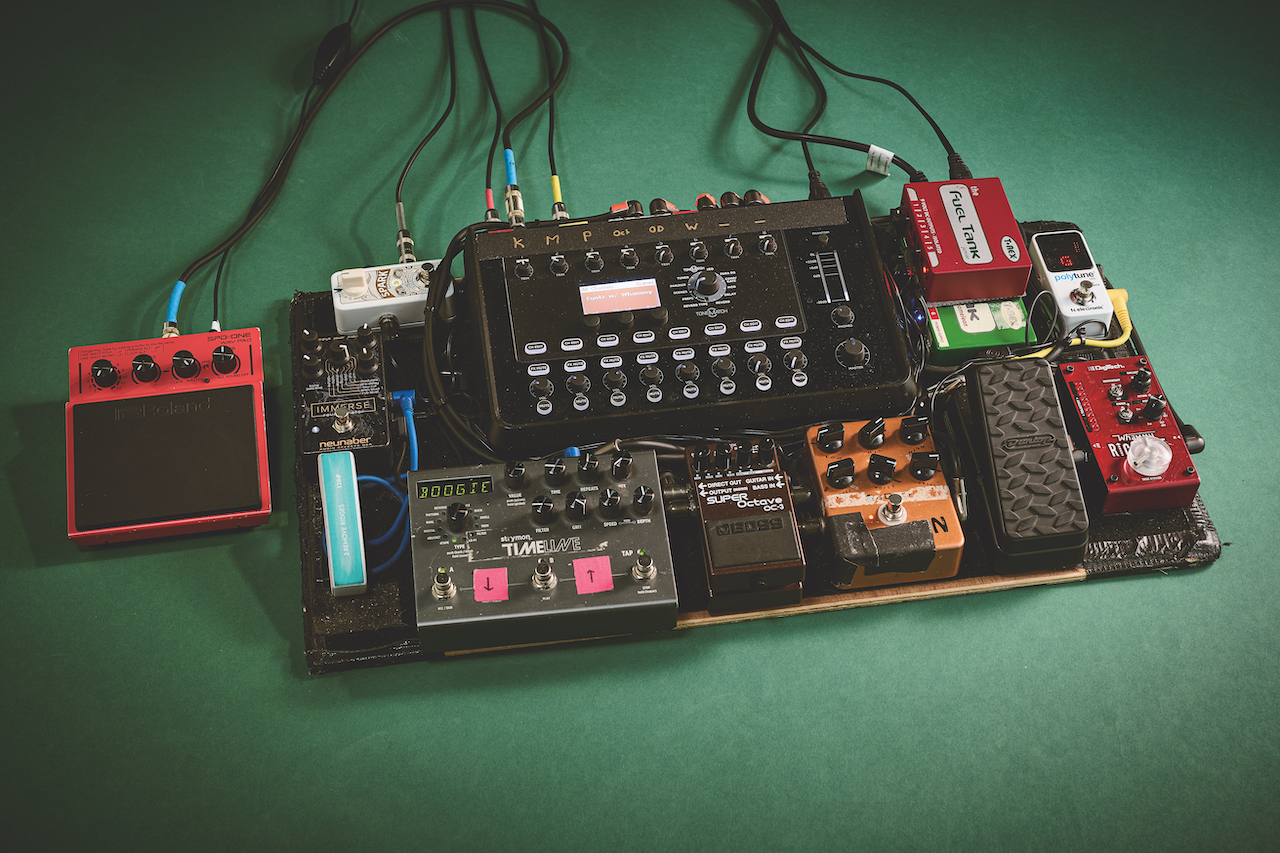
Moving back to the effects, you have your pedalboard wired in a very specific way. Tell us how you do it.
“Well, the first thing I plug into is a mixer because you can have a maximum of two pickups coming out of one hole on your guitar. I have two holes in the guitar, so I have two stereo outputs. They then get split through a very long cable and go into different channels on the mixer, so I can set the levels and the EQ.
“From there two things happen: I have a mixer with what’s called ‘auxiliary sends and returns’ and what that means is I can send the signal from – say, the magnetic soundhole pickup – out of an output into a guitar pedal and then back into its own channel on the mixing desk. And I can do that multiple times.
Since 2013 when my first album came out, I’ve been touring about 10 or 11 months of every year. Almost Tommy levels!
“What I’ve ended up with by doing that is I’m sending the signal out into the pedal and then back into its own channel, so I also get to set the level and mix and EQ and play with those guitar pedals as well. You know, it’s like some pedals sound great, but I wish I could EQ them a little bit. Well, you can; you can send it back into the mixer and EQ it. And then, at the end of that process, the main outputs of that mixer just go out to the front-of-house.
“I have mentioned about the auxiliary outputs and I have another one for the ‘kick drum pickup’, and I send that straight to front-of-house so they have control over the kick drum. They can actually isolate it completely, send it to the subwoofers [in the PA] and get the best kick drum sound that they can for that room. Basically, it’s getting four pickups, turning them into an acoustic guitar, a kick drum, an electric guitar, giving the electric guitar a few special effects, and then sending it all out.”
Would you say the live stage feels like home to you now?
“Well, since 2013 when my first album [What Just Happened?] came out, I’ve been touring about 10 or 11 months of every year, which is a lot. It’s almost Tommy levels! Because, like many people in their early 20s who grew up in a small town, you want to see the world, you want to play music.
“And that’s what being a musician was: it was hitting the road and having adventures and all of that. Now we exist in a time where technology has allowed people to be professional musicians just from sitting at home and filming themselves and putting it on the internet, being a YouTuber, or music commentator, or whatever it may be.
“No matter what I try to do from home, I just have to play live concerts. It’s an addiction that I don’t see really going anywhere. It’s a problem because now I’m at an age where I want to take care of my family or I want to see friends or see my partner and things like that.
“It’s a work/life balance I’m trying to work on in terms of being away, but I just don’t get the same enjoyment from doing anything else with the guitar except for playing shows. I just love playing to people, I love meeting people, I get very extroverted when I’m on the road and just like to meet people, you know?
“I feel that it’s a real shame that there’s a whole generation of people out there now who just don’t really know what that feels like because they’re just so used to everything being digitised. And that’s not a judgmental statement; it’s just that I’m wired differently because I started this at a different time.
“A lot has changed in 10 years in terms of what it means to be a musician. I’m 34 now, and maybe I don’t count as an old dog, but it’s very hard to teach me new tricks at this point, as I’ve just been on the road that much.
“So yes, the short answer to your question is that being on the road is where it’s at for me, personally. I think that’s why it’s taken so long to get another album done!”
- Galactic Acid is out on August 6. Mike Dawes tours the USA in June through August – see MikeDawes.com for full dates.







